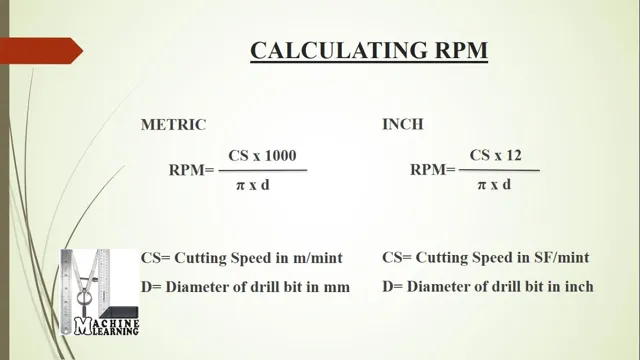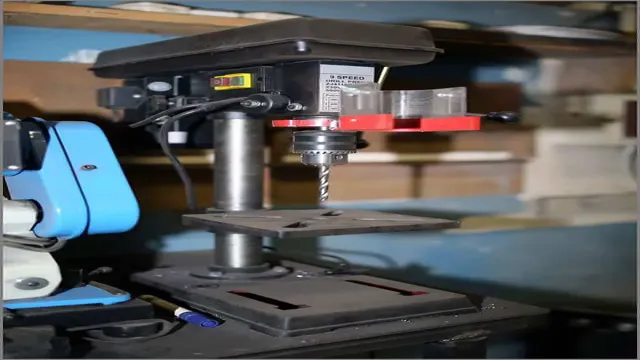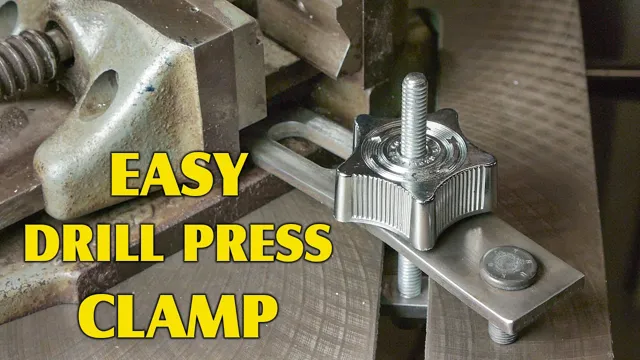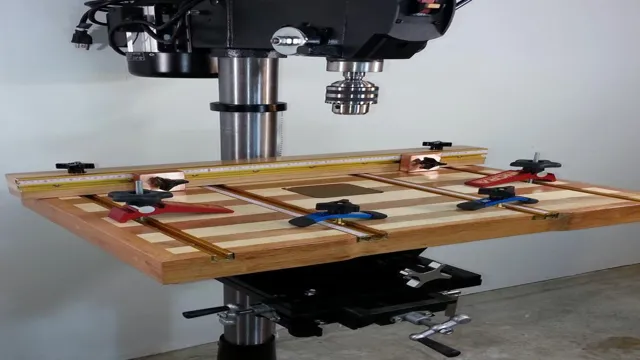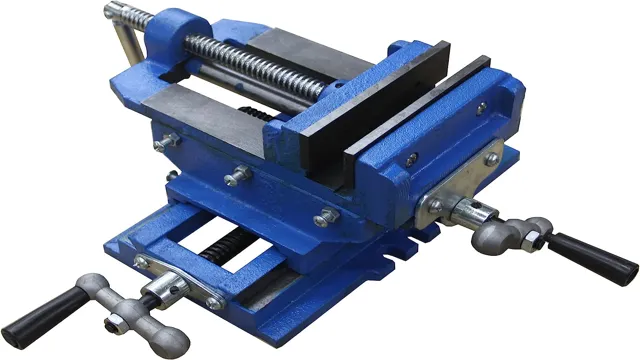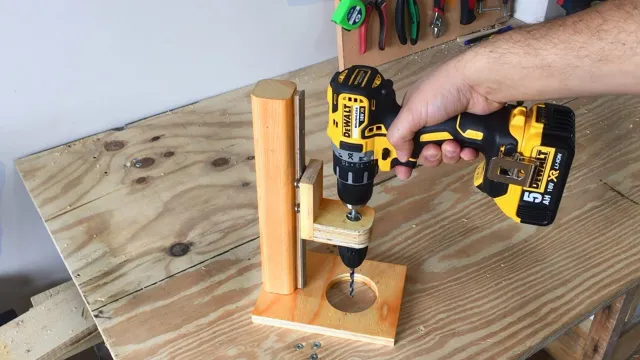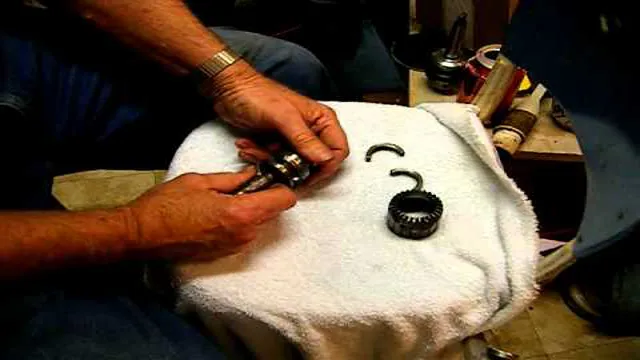How to Adjust Drill Press Runout: Tips and Tricks for Accurate Drilling
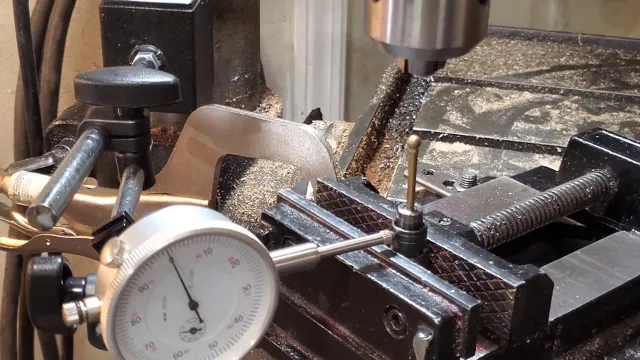
Are you tired of your drill bits wobbling and producing inaccurate holes? Is your drill press ruining your precision in woodworking or metalworking projects? One of the main culprits could be drill press runout. Runout is the amount of wobbling that occurs in the spindle of a drill press, resulting in inaccurate drilling. Fortunately, adjusting drill press runout is a simple but crucial process that can improve the accuracy of your holes and ultimately make your work easier and more efficient.
In this blog, we’ll cover everything you need to know to adjust your drill press runout, including common causes, types of runout, and step-by-step instructions for fixing the problem. With a little bit of knowledge and practice, you can take your woodworking or metalworking projects to the next level and achieve the precision you’ve been craving.
Understanding Runout
If you’ve ever experienced problems with accuracy in your drilling projects, then you may be dealing with runout. Runout refers to the degree of wobbling that occurs between the drill bit and the chuck. It can be incredibly frustrating to have a tool that just won’t cooperate, and it’s important to address it in order to achieve precision in your drilling.
Thankfully, adjusting drill press runout is a fairly simple process. You can start by checking the chuck and ensuring that it’s properly seated and tightened. You should also inspect the spindle and bearings for damage, which can contribute to runout.
If everything appears to be in good working order, then it may be necessary to balance the chuck or replace it altogether. By taking the time to properly diagnose and remedy the issue of runout in your drill press, you can achieve the precision and accuracy required for your drilling projects.
What is runout? Why is it a problem?
Runout refers to the deviation of a rotating tool or part from its true axis of rotation. This is a common problem in machining operations, where even a slight amount of runout can cause a number of issues. Runout can result in poor surface finish, reduced tool life, increased cutting forces, and even part damage.
The most common causes of runout include spindle wear, improper tool mounting, and worn bearings. To prevent runout, it is important to regularly inspect and maintain equipment, ensure proper tool mounting and alignment, and replace worn components as needed. Understanding and addressing runout is crucial for achieving high-quality, precise machined parts.
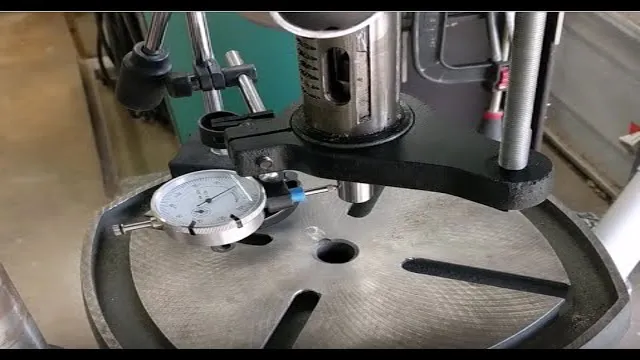
Checking for Runout
Are you experiencing issues with your drill press’ accuracy and precision? One of the common reasons for this is runout, which is the wobbling of the chuck or spindle that causes the drill bit to move off-center while in use. To fix this issue, you’ll need to follow some simple steps to adjust drill press runout. The first step is to remove the bit and check the spindle by running it up and down.
Look closely for any runout, and if you notice any, adjust the spindle until it’s perfectly centered. Tighten the spindle and recheck the runout. Repeat this process until there is no runout.
Additionally, check the chuck for any damage or wear, and replace it if necessary. Performing regular maintenance and checks on your drill press will ensure that it’s working accurately and safely. With these adjustments, you will notice a significant improvement in your drill press performance and accuracy.
Tools you will need
As you dive into the world of machining, it’s important to know the tools you’ll need. One crucial tool you’ll need is a way to check for runout. Runout refers to the amount of wobble or deviation from a true rotating axis in a machine’s cutting tool or workpiece.
It can lead to inaccurate cuts, decreased tool life, and even damage to the machine itself. Luckily, checking for runout is fairly straightforward. All you need is a dial indicator and magnetic base.
Attach the indicator to the base, then place it next to the rotating object. Slowly rotate the object while watching the dial indicator. If the indicator fluctuates more than a few thousandths of an inch, you may have runout.
Keep in mind that runout can have many causes, such as worn bearings or an unbalanced tool. But by using a dial indicator regularly, you can catch and resolve runout issues before they cause any major problems.
How to check for runout
Runout is a common issue in machinery, but it is not always easy to spot. Runout refers to the amount of wobbling or movement that occurs in a rotating component, such as a wheel or a shaft. The easiest way to check for runout is to use a dial indicator, which can be attached to the rotating component and will measure the amount of wobble.
To use the dial indicator, first, make sure that the component is securely mounted and at a consistent speed. Then, place the indicator on the component and take a reading. If the reading is within the acceptable tolerance, then the component is okay.
However, if the reading is outside of the tolerance, then the component needs to be adjusted or replaced to reduce runout. By regularly checking for runout, you can prevent further damage to your machinery and ensure that it functions at its best.
Correcting Runout
If you want to ensure precision and accuracy in your drilling, it’s crucial to correct runout in your drill press. Runout is the amount of wobble or deviation from true rotation in the drill bit caused by imperfections in the machine and the spindle. Thankfully, you can adjust drill press runout by following a few simple steps.
First, make sure to clean the spindle and chuck to remove any dirt or debris that may affect the seating of the drill bit. Then, check the chuck for any damage or wear and replace it if necessary. Next, remove the drill bit and test the runout using a dial indicator.
If the runout is more than the maximum acceptable level, adjust the chuck by tightening or loosening the jaws until you achieve the desired result. With a little patience and attention to detail, you can correct runout in your drill press and achieve more accurate and consistent results.
Tools you will need
When it comes to correcting runout, you’ll need a number of tools at your disposal. One of the most important tools is a dial indicator, which can help you measure the amount of runout in your machine. You’ll also need some way to grip your workpiece securely, whether that’s a specialized collet or a standard vise.
Other tools you may need include a center drill, a center finder, and a cutting tool that can remove material from the workpiece as needed. But perhaps the most important tool you’ll need when correcting runout is patience. This process can be time-consuming, especially if you’re working with a complex machine or arduous part.
But with the right approach and plenty of persistence, you can achieve the level of precision and accuracy you need to get the job done right. So don’t rush the process- take your time, use the right tools, and stay focused on your objectives to ensure success.
Steps to correct runout
Correcting runout can be a quick and simple process if you follow these steps. First, you’ll need to identify the source of the issue. This may involve inspecting your machine and measuring the runout using a dial indicator.
Once you’ve determined the cause of the runout, you’ll need to take corrective action. This could mean adjusting the bearings, replacing worn parts, or simply repositioning the workpiece. In some cases, you may need to realign your machine.
This process typically involves adjusting the centerline of the spindle or workpiece to ensure that it runs true. It’s important to remember that correcting runout is a critical step if you want to produce high-quality parts. By taking the time to identify and fix the issue, you’ll be able to improve your productivity and reduce scrap rates.
With a little bit of effort, you can ensure that your machine is running at its best.
Maintenance and Prevention
Adjusting drill press runout is essential to ensure that your machine works efficiently and accurately. Runout occurs when the drill bit wobbles during operation, resulting in uneven holes and reduced accuracy. To adjust the runout of your drill press, start by cleaning the spindle and chuck thoroughly.
Inspect the drill bits and chuck jaws for any damage, wear, or debris. Then, insert a precision instrument or dial indicator into the spindle and tighten the chuck. Run the drill press at varying speeds and note the amount of runout present.
Finally, adjust the spindle taper or replace the chuck if necessary until the runout is within acceptable levels. Regular maintenance and prevention measures are crucial to ensuring that your drill press functions correctly and lasts for a long time. By taking the time to adjust the runout and fix any other issues, you can ensure that your drill press is always operating at its best.
Keeping your drill press working properly
When it comes to keeping your drill press working properly, maintenance and prevention are key. Regularly cleaning and lubricating the drill press can help prevent wear and tear, as well as possible breakdowns. It is also important to check and tighten any loose bolts or screws and ensure that the belts are properly tensioned.
By taking the time to perform these simple tasks, you can extend the lifespan of your drill press and ensure that it operates at its best for years to come. Don’t wait until something goes wrong to take care of your drill press – a little bit of maintenance can go a long way in preventing costly repairs in the future.
Tips for preventing runout
Runout is a common problem that machine operators encounter, which can lead to inefficiencies and defects in the finished product. However, there are several preventative measures that can be taken to minimize the occurrence of runout. First, regular maintenance is key – ensuring that the machine is clean, lubricated, and in good working condition can help to reduce the impact of runout.
Additionally, it is important to pay attention to the quality and condition of the cutting tools being used, as dull or damaged tools may cause runout to occur more frequently. Another helpful tip is to use high-quality materials, which can help to reduce the risk of variations in diameter or concentricity during the machining process. Finally, it is important to be mindful of the setup process – taking the time to accurately align the machine and set the appropriate cutting parameters can help to prevent runout from occurring in the first place.
By following these tips, machine operators can help to minimize the impact of runout and ensure that their finished products are of the highest possible quality.
Conclusion
In summary, adjusting drill press runout is a task that requires a combination of precision, patience, and perseverance. Think of it like trying to balance a spinning top – it can be tricky, but with the right tools and techniques, you can achieve a flawless result. So, grab your dial indicator, check for any misalignments, shim where necessary, and, above all, don’t lose your cool – you got this!”
FAQs
What is runout and how does it affect my drill press?
Runout is the amount of wobble or deviation from a straight line that the drill bit experiences during rotation. It can affect the accuracy of your drilling and can cause unnecessary wear and tear on your equipment.
How do I measure runout on my drill press?
You can use a dial indicator or a Runout Measurement Gauge to measure runout on your drill press. These tools will give you precise measurements of how much your bit wobbles.
What causes runout in a drill press?
There are several factors that can cause runout in a drill press, including worn bearings, misalignment, or a bent spindle. Using dull or improperly maintained drill bits can also contribute to runout.
Can runout be fixed on a drill press?
Yes, runout can often be fixed on a drill press by adjusting or replacing the spindle or bearings. Properly maintaining and using sharp drill bits can also help reduce runout.
How do I align my drill press to reduce runout?
Start by checking the alignment of your drill press table and adjusting it as needed. Next, check the alignment of your chuck and spindle, and adjust if necessary. Finally, ensure that your drill bits are sharp and properly installed in the chuck.
What is the maximum acceptable amount of runout on a drill press?
The maximum acceptable amount of runout on a drill press will vary depending on the type of work you are doing. Generally, a runout of 0.003 inches or less is acceptable for most drilling applications.
Can runout cause damage to my workpiece?
Yes, excessive runout can cause damage to your workpiece, particularly when drilling delicate materials or when precision is critical. It can also cause your drill bits to wear out more quickly, requiring more frequent replacement.

